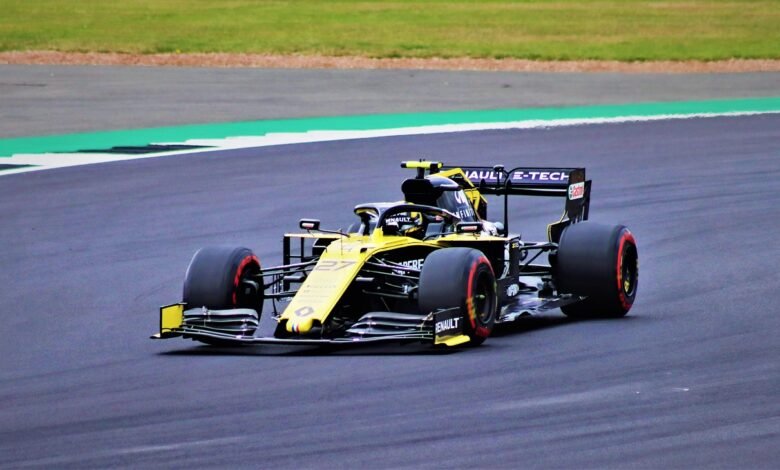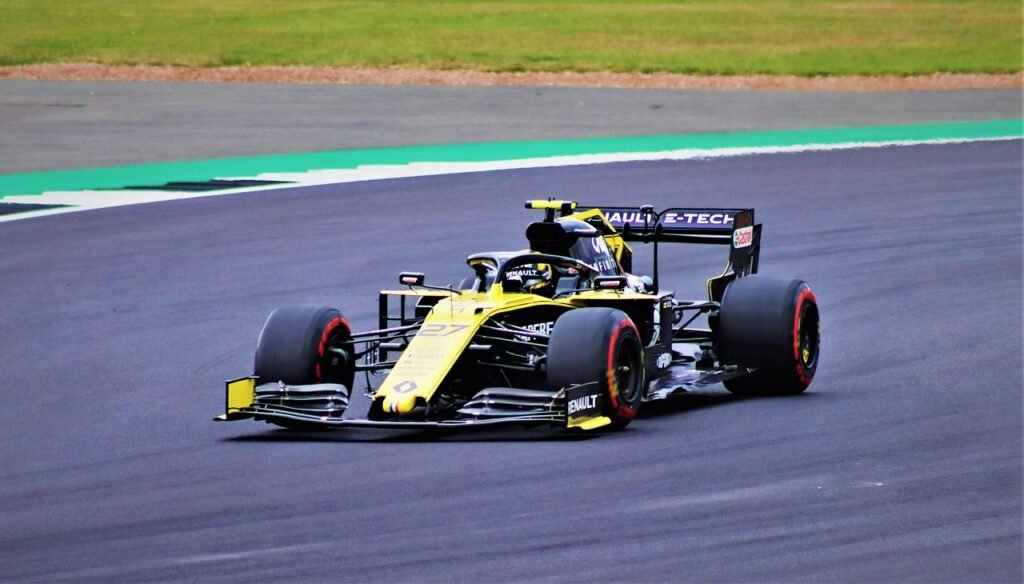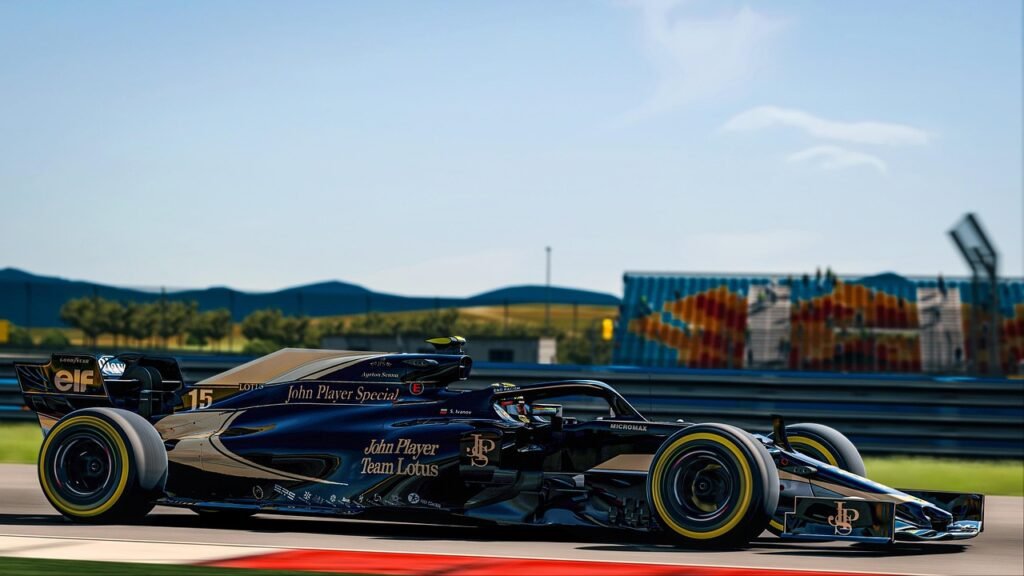Nico Hülkenberg: F1 Career, First Podium & Racing Legacy


German racer Nico Hülkenberg has spent 15 seasons proving that steady skill and relentless patience pay off. From kart‑track prodigy to 2025 British Grand Prix podium finisher and Audi’s future spearhead, his story blends grit, record‑breaking junior titles, and an endurance triumph that still stuns the paddock.
1. Who Is Nico Hülkenberg?
Nico Hülkenberg was born on 19 August 1987 in Emmerich am Rhein, Germany. He speaks four languages, studied logistics for his family’s shipping firm, yet chose motor sport as his life’s work. Fans know him for calm radio messages, dry humor, and razor‑sharp car control that engineers trust when data runs thin.
Over 200 Grands Prix later, he finally climbed an F1 podium at a rain‑soaked Silverstone in July 2025, finishing third for Kick Sauber after starting 19th. The result capped years of near‑misses and showed why veteran savvy still matters in modern Formula 1.
2. How Did Nico Hülkenberg Start Racing?
Hülkenberg entered karting at age 10, winning national junior crowns in 2002 and 2003. Early manager Willi Weber—Michael Schumacher’s long‑time mentor—spotted Nico’s composure under pressure and funded crucial steps up the European ladder.
The young German’s methodical style translated quickly to cars. In 2005 he dominated Formula BMW ADAC, signalling an ability to master new machinery almost on arrival. That fast adaptation remains a hallmark of his driving today.
3. What Highlights Define His Junior Career?
Between 2006 and 2009 Hülkenberg won four major titles in four years: A1 GP, Formula 3 Euro Series, GP2 Asia, and the main GP2 championship. Those feats placed him in the company of Lewis Hamilton and Nico Rosberg as rare immediate champions at each stage.
The GP2 crown in 2009 carried extra weight because Nico clinched it as a rookie—something only Hamilton had done before. This “rookie champion” label increased expectations and secured his 2010 F1 debut with Williams.

4. How Did He Step into Formula 1?
In 2010 Hülkenberg shocked seasoned competitors by seizing pole position at a damp São Paulo qualifying session. Williams lacked race‑winning pace, yet Nico’s lap proved that raw talent could overcome machinery limits for one perfect moment.
Subsequent seasons saw moves to Force India, Sauber, Renault, Racing Point, and Haas. Wherever he went, engineers praised his technical feedback, often calling him “the perfect baseline driver.” That reliability kept doors open even when budgets forced short‑term deals.
5. Why Has a Podium Been So Elusive Until 2025?
For years, midfield cars limited Hülkenberg’s podium chances. He finished fourth on several painful Sundays, including Belgium 2012 and Korea 2013, but safety‑car timing and tire wear always nudged him off the rostrum.
The drought ended at the 2025 British Grand Prix when chaotic weather reshuffled the order. Nico’s early switch to intermediates and error‑free laps vaulted him from the back to third, finally removing the “best driver without a podium” tag.
6. How Did Victory at Le Mans Shape Nico’s Image?
In 2015 Porsche invited Hülkenberg to share its 919 Hybrid in the 24 Hours of Le Mans. He joined Nick Tandy and Earl Bamber, and the trio won outright—making Nico the first active F1 driver to win Le Mans in 24 years.
That endurance triumph bolstered his reputation for adaptability and tire management. It also showed sponsors that he could deliver factory success on debut, a trait Audi later cited when announcing its future Formula 1 program.
7. Which Formula 1 Teams Has He Driven For?
- Williams (2010) – Rookie season highlighted by Brazil pole.
- Force India / Racing Point (2011–2012, 2014–2016, 2020 stand‑ins) – Consistent points scorer.
- Sauber (2013) – Nearly podium in Korea.
- Renault (2017–2019) – Helped rebuild factory team.
- Haas (2023–2024) – Key in car‑development direction.
- Kick Sauber (2025–) – Transitional phase before full Audi takeover.
These varied seats underline his ability to integrate quickly with new crews, provide clear feedback, and extract peak tire life—qualities smaller teams crave.
8. How Did Nico’s Return with Haas Prove His Value?
After a year on the sidelines, Hülkenberg joined Haas for 2023 and immediately out‑qualified teammate Kevin Magnussen 13‑9. His detailed post‑session debriefs helped the US‑based team stabilize its race pace and earned him an extension.
In 2024 he scored Haas’s best finish—fifth in Spain—by stretching a medium‑tyre stint longer than rivals. That drive convinced Audi management that his feel for tires and race craft would aid its new power‑unit project.
9. Why Did Audi Recruit Nico for 2026 and Beyond?
Audi publicized its 2026 entry early and wanted a driver who combines technical understanding, German market appeal, and media experience. Hülkenberg checked every box and signed a multi‑year deal beginning in 2025 with Sauber to integrate before the Audi rebrand.
Audi’s power‑unit engineers cite Nico’s endurance‑racing insight into hybrid deployment and his calm feedback loops. For a manufacturer with no F1 background since Auto Union’s pre‑war days, that experience is priceless.
10. What Stands Out in His Driving Style?
Observers praise Hülkenberg’s late‑trail braking and mid‑corner balance. He rotates the car earlier, allowing earlier throttle application without stressing the rear tires. That technique proves potent in wet or mixed conditions—seen clearly at Silverstone 2025.
He also excels at fuel and energy saving. Engineers often task him with opening lift‑and‑coast windows first so strategists can model stint length. This prudence often turns mediocre grid spots into Sunday points.
11. How Does Nico Train His Body and Mind?
Hülkenberg favors road cycling in the Côte d’Azur hills for cardio plus strength‑endurance gym circuits. He keeps reaction time sharp with batak light boards and racing simulators that replicate sprint‑race intensity.
Mentally, he uses short meditation sessions and away‑from‑track family time with wife Eglė Ruškytė and daughter Noemi Sky to reset. He often notes that a balanced life off‑track keeps his race‑day focus uncluttered.
12. What Can Fans Expect from Nico Hülkenberg’s Future?
Kick Sauber aims to finish 2025 inside the top five in the constructors’ standings. Audi’s 2026 power unit targets efficiency over raw horsepower and Hülkenberg’s hybrid knowledge should speed early development.
If Audi produces a front‑running car by 2027, Nico could finally chase the Grand Prix win that statistics say his talent deserves. With a first podium secured, confidence—and contract length—are on his side.
Conclusion
Nico Hülkenberg’s journey shows how resilience meets opportunity. Junior‑series dominance built expectations; midfield years honed patience; Le Mans victory proved versatility; the 2025 podium rewarded perseverance. Now, as Audi’s lead driver, Hülkenberg stands on the brink of a new chapter—one where experience, not luck, may finally write him into the Grand Prix‑winning books.
FAQs
Q1. Does Nico Hülkenberg have any hobbies outside racing?
Yes. He enjoys sailing along the Côte d’Azur, experimenting with home‑barista coffee machines, and following Borussia Dortmund football matches. These low‑adrenaline hobbies let him relax while keeping his reflexes sharp.
Q2. What languages does Nico Hülkenberg speak fluently?
He speaks German, English, Dutch, and French. The multilingual ability helps him communicate with global engineers, sponsors, and fans, enhancing team cohesion during intense race weekends.
Q3. Is Nico Hülkenberg involved in charity work?
He supports “RTL – Wir helfen Kindern,” a German children’s charity, and takes part in annual karting events that raise funds for pediatric hospitals. He also donates race‑worn gear for auction to support environmental causes.
